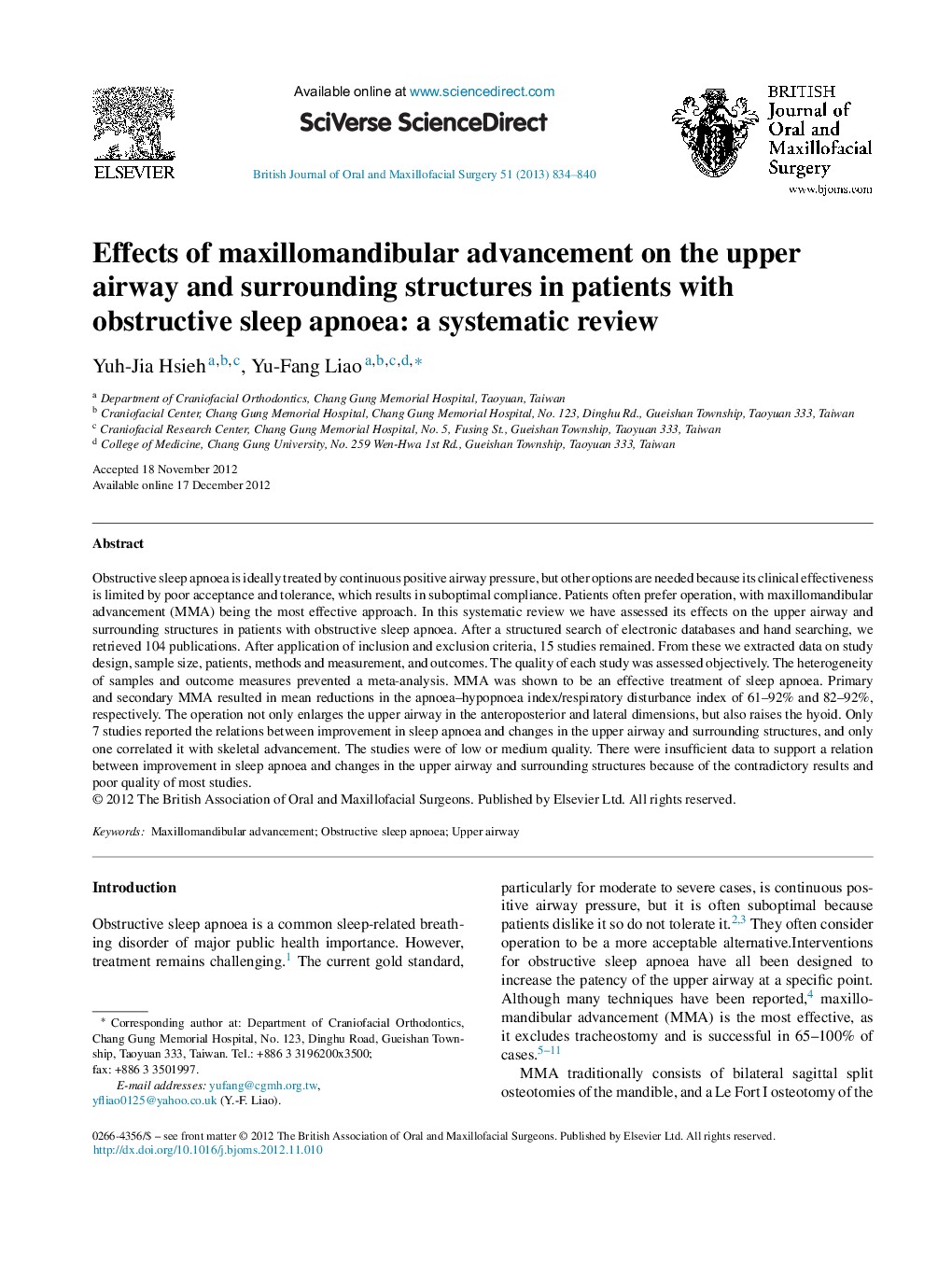| Article ID | Journal | Published Year | Pages | File Type |
|---|---|---|---|---|
| 3123692 | British Journal of Oral and Maxillofacial Surgery | 2013 | 7 Pages |
Obstructive sleep apnoea is ideally treated by continuous positive airway pressure, but other options are needed because its clinical effectiveness is limited by poor acceptance and tolerance, which results in suboptimal compliance. Patients often prefer operation, with maxillomandibular advancement (MMA) being the most effective approach. In this systematic review we have assessed its effects on the upper airway and surrounding structures in patients with obstructive sleep apnoea. After a structured search of electronic databases and hand searching, we retrieved 104 publications. After application of inclusion and exclusion criteria, 15 studies remained. From these we extracted data on study design, sample size, patients, methods and measurement, and outcomes. The quality of each study was assessed objectively. The heterogeneity of samples and outcome measures prevented a meta-analysis. MMA was shown to be an effective treatment of sleep apnoea. Primary and secondary MMA resulted in mean reductions in the apnoea–hypopnoea index/respiratory disturbance index of 61–92% and 82–92%, respectively. The operation not only enlarges the upper airway in the anteroposterior and lateral dimensions, but also raises the hyoid. Only 7 studies reported the relations between improvement in sleep apnoea and changes in the upper airway and surrounding structures, and only one correlated it with skeletal advancement. The studies were of low or medium quality. There were insufficient data to support a relation between improvement in sleep apnoea and changes in the upper airway and surrounding structures because of the contradictory results and poor quality of most studies.
